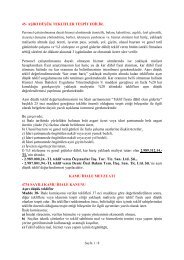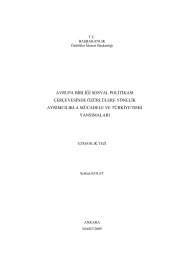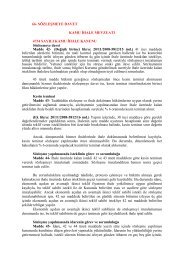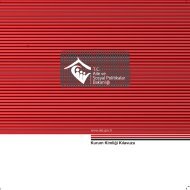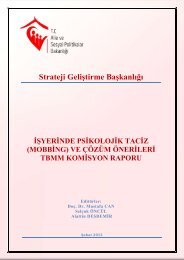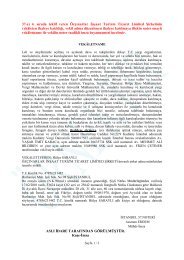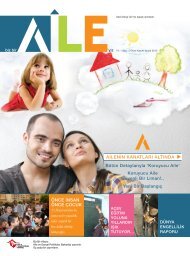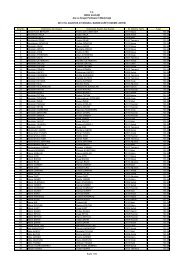Sosyal PolÄ°tÄ°ka tÄ°ka - EÄitim ve Yayın Dairesi BaÅkanlıÄı - Aile ve ...
Sosyal PolÄ°tÄ°ka tÄ°ka - EÄitim ve Yayın Dairesi BaÅkanlıÄı - Aile ve ...
Sosyal PolÄ°tÄ°ka tÄ°ka - EÄitim ve Yayın Dairesi BaÅkanlıÄı - Aile ve ...
- No tags were found...
You also want an ePaper? Increase the reach of your titles
YUMPU automatically turns print PDFs into web optimized ePapers that Google loves.
Yıl: 12 Cilt: 7 Sayı: 29 Temmuz - Aralık 2012<br />
of the programme and understanding of target audience on the fairness of beneficiary<br />
selection criteria of the CCT programme. These studies also assessed information<br />
source and channels of the CCT programme applicants and beneficiaries and their<br />
knowledge le<strong>ve</strong>l on benefits and understanding of programme conditionality in addition<br />
to their opinions on the CCT education benefits and particularly the factors that<br />
are deemed to influence their decisions on the schooling of children.<br />
As mentioned abo<strong>ve</strong>, it is frequently emphasized by the policy papers and implementing<br />
agency, GDSA, that CCT education benefits were designed to increase school<br />
attendance rate and decrease the dropout rate by linking cash transfer to behaviour<br />
and CCT programme had also a particular priority to increase school attendance rate<br />
of girls and to strengthen position of mother in poor families. To test this assertion,<br />
impact assessment studies used a Regression Discontinuity Design (RDD) and tried to<br />
measure impacts of CCT education benefits on school enrollment rate (International<br />
Food Policy Research Institute, 2006b).<br />
These studies re<strong>ve</strong>aled that the CCT programme does not seem to produce a positi<strong>ve</strong><br />
impact on primary school enrolment rates. Furthermore, they were unable to present<br />
any evidence that the CCT programme has an influence o<strong>ve</strong>r the rate of progression<br />
from primary school to secondary school (International Food Policy Research Institute,<br />
2006b, p.63). Howe<strong>ve</strong>r, they found out that CCT programme contributed to raise<br />
the secondary school enrollment for girls who are aged 14-17 by 10.7 percent (International<br />
Food Policy Research Institute, 2006b, p.63). According to these studies,<br />
CCT programme raised school attendance rate of girls by 5.4 percent in secondary<br />
schools (International Food Policy Research Institute, 2007b, p.10).<br />
These impact assessment studies also identified and re<strong>ve</strong>aled the basic economic, social<br />
and cultural factors that are considered to influence parents’ schooling decision<br />
(International Food Policy Research Institute, 2007a, p.60). These factors are listed<br />
below :<br />
Parents’ expectations on the role of education in their children’s future, particularly<br />
for girls,<br />
I. Amount of school expenditures,<br />
II.<br />
Understanding of gender roles,<br />
III. Success or performance children at school,<br />
IV. Problems created by location of schools and transportation to and from schools,<br />
V. Feelings and attitudes of children towards school,<br />
VI. Safety concerns and social influences at schools,<br />
VII. Degree of help needed at home, and<br />
VIII. Income expectations in the cases that children work<br />
58



